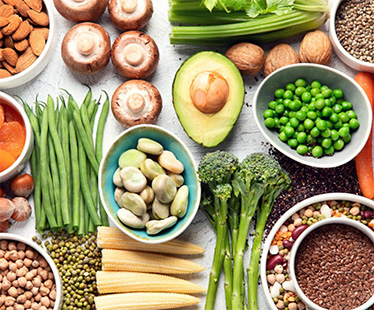Did you know that kale is a source of protein? In fact, many plants are. And while no one is about to eat 10 bowls of raw kale, there are good reasons to add plants into your diet for the protein benefit.
While most plants have some protein, it’s not in the quantities of animal sources, so you may need to be creative. Protein is one of three essential macronutrients necessary for our body to function at an optimal level. Plants, unlike animal proteins, also contain thousands of micronutrients (vitamins). In addition, they often contain fiber and “good fats,” which support a healthy gut microbiome and reduce the risk of heart disease. So, when looking for protein sources, make sure to include plants to get the best of both.
WHY PROTEIN MATTERS
Protein is related to much more than building and maintaining muscle. Protein dramatically affects your immune system, glucose levels and how well your body can repair and balance hormones. It also is a component of longevity. The Food and Nutrition Board sets the recommended daily allowance at one-half to 1 gram per pound of body weight, but that can vary depending on your age and how active you are.
HOW DO I ADD MORE PLANTS?
Quantity of protein should come second to quality. For the most impact, you want to look for “clean” protein. There’s been a trend toward plant-based “meats,” but those often are not quality nor clean sources. They are highly processed and usually contain food-like substances and fillers to create the taste and texture of meat. Just the same, ingredients like isolated whey or isolated soy are not whole, clean food sources and best to be avoided.
QUALITY OVER QUANTITY
Ideally, half your plate will be vegetables. While this will help you get your much-needed seven to 13 daily servings of colorful fruits and vegetables and some protein, you likely will need more. Animal proteins, soy and quinoa are complete proteins that contain all nine of the essential amino acids, the building blocks of protein, that our bodies cannot make. Isn’t it miraculous that our bodies make the other 11?
You can get complete proteins from plants by combining rice with beans, adding nuts to oatmeal, adding pumpkin seeds, chickpeas or edamame to salads, etc. Nuts, seeds, beans and grains can be added to nearly any dish, and as for animal sources, stick with organic, grass-fed and free range to keep it “clean.” Remember, quality over quantity!



